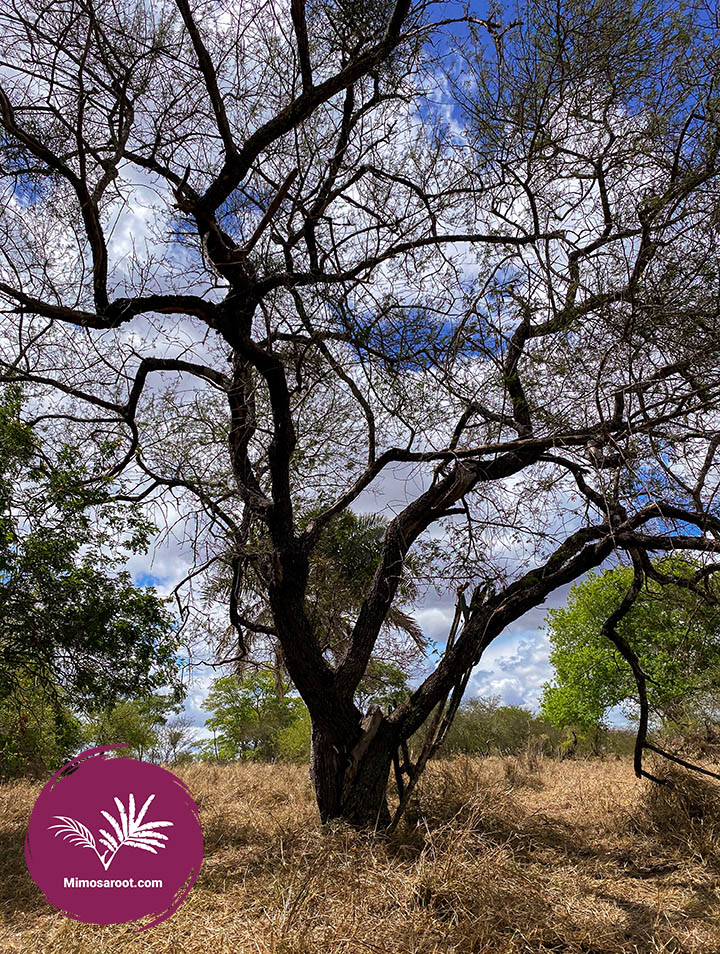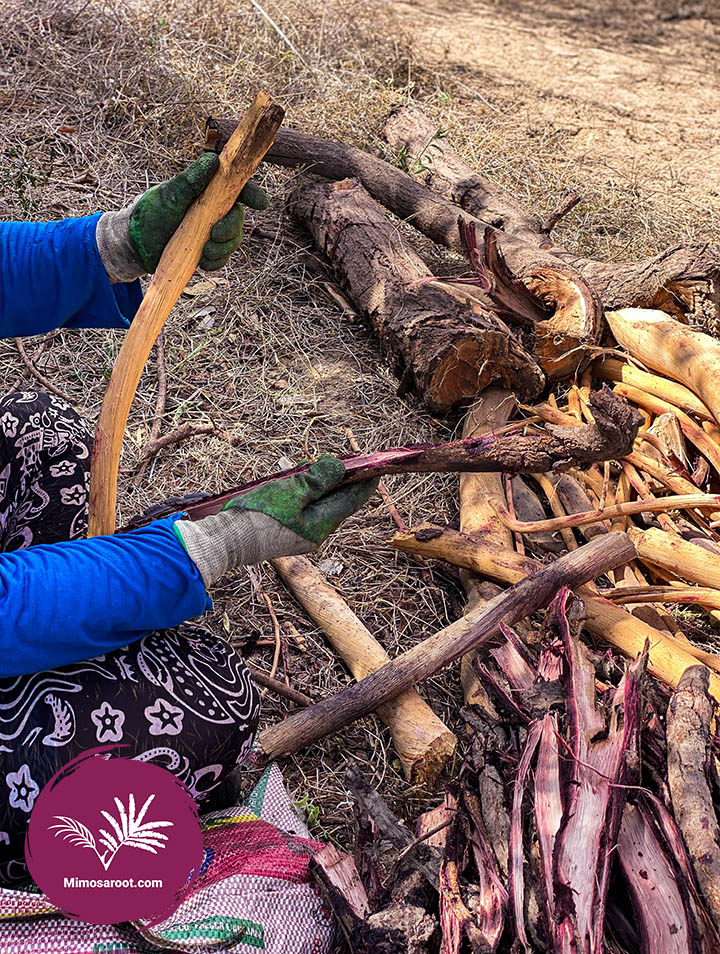Mimosa hostilis, a mysterious tree
Jurema, Karirí, Pankarurú, Tusha, Fulnio, and many more – these are all native names for a mysterious tree, that we know as Mimosa Hostilis, or formerly Mimosa Tenuiflora. One of the titles beautifully translated from the Nahuatl language as ‘tree of the hill that bleeds’, some believe it’s due to the deep reddish colour from the under layer of the root bark.

This plant is a bushy tree that can grow up to 8 meters. It has been found growing wild in Mexico, Central America and in tropical lowlands, according to Sánchez Léon the plant can be found in altitudes of 1000 meters. It has sharp thorns coating their branches and bijugate leaves. Their flowers vary from white to pale yellow, grow in clusters and each pod can contain up to four fruits each.
Mimosa Hostilis is originally from the depths of the Amazon forest in between the rivers of the Anaconda, surrounded by Brazil, Peru, and Colombia, making it a big part of several cultures. It was first seen from the rural and indigenous communities.
In Brazilian culture, natively known as Jurema, the plant’s roots are used to provide a Jurema drink, so-called Vinho de Jurema. It has a wide range of uses for cosmetic treatments, medicinal recipes and indigenous rituals. This practice is still active from members of the Santo Daime Church: Jurema drink is still consumed during ceremonies for their spiritual purposes. The use of the plant varies from location, just as in Brazil the spiritual purpose domains, in Mexico, the plant is used mostly for skin treatments and even deserved the title ‘tree of skin’. It is also used as an agroforestry ally.
Americans typically utilize the plant in agroforestry. The convenient uses of Mimosa Hostilis is documented for being perfect for agriculture and cultivation. Both charcoal and firewood can be extracted as fuel. Mimosa is used for construction purposes, too, because it acts as a raw material. Animals get benefitted from obtaining fodder from the plant.
Because of its high tannin content, Mimosa tree bark is often used as a natural dye and in production of leathers. The tannin also prevents the wood from rotting, therefore the trees can be used for long duration furniture.
The plant is often used to make fences to protect their crops from potential invaders, posts for satellite and electricity, to feed animals from the crop as it is rich in nutrients and protein, it’s an alternative of charcoal and it’s used to create fires and keep them warm during the winter, the specific smell of burning Mimosa is abundant during rough winters.
Mimosa Hostilis grows well even after a forest fire, or other ecological disturbance. As it is a prolific pioneer plant (species that are the first to colonize poor soils or ecosystems that have been disrupted by fire) its leaves fall on the ground forming a layer of mulch that eventually turns into humus, along with its ability to fix nitrogen the tree gathers enough conditions to make other plant species to come along.


